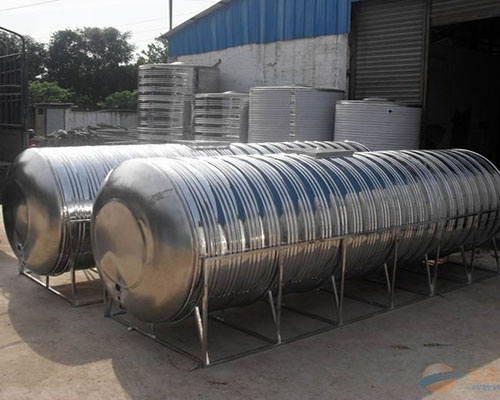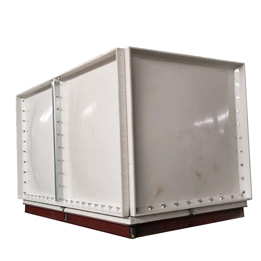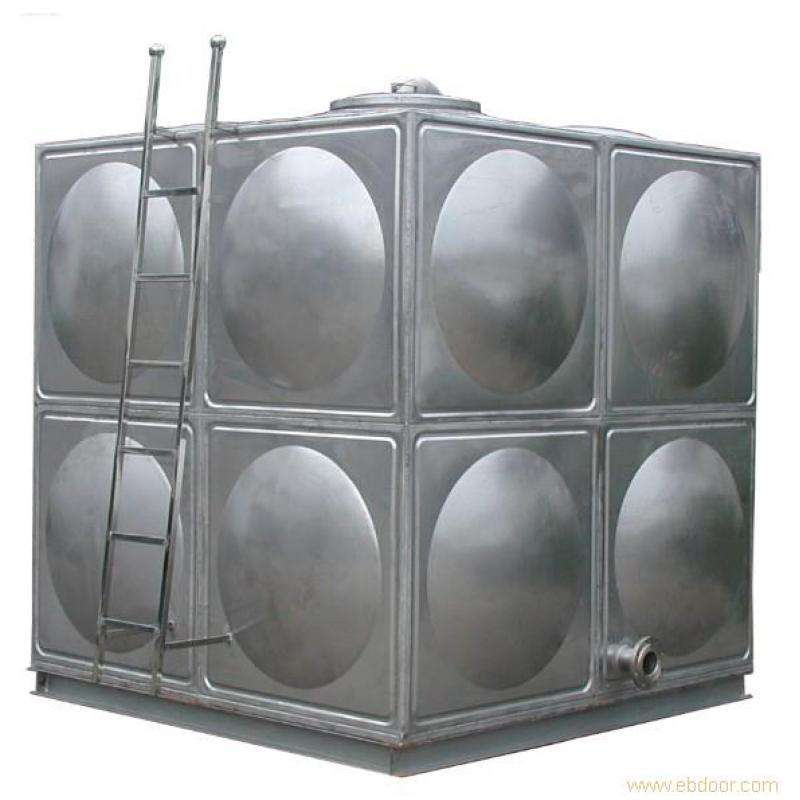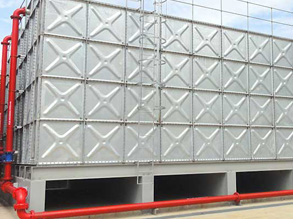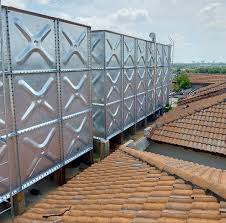Chapter 1 // What is septic tank?
By definition, a septic tank is chamber that is made up of various materials like concrete, fiberglass, PVC, or plastic. It is where domestic wastewater is collected and flows for treatment.
Although it performs anaerobic processes including settling of solid wastes, yet, treatment happening inside a septic tank can be considered as moderate.
Recommended to be installed underground, septic tank follows a natural process to treat sewage inside. Form two to more chambers or compartment, depending on the design, through the inlet pipe, it is where the tank receives wastwater.
The system of septic tank is considered as onsite sewage facility. Treated liquid effluent from the septic tank is recommended to be disposed in a septic drain field with further water treatment will be provided.
With a capacity that range from 4,000 to 7,500 liters, the entrance to where the waste will enter is called an inlet while it exits to a septic drain field. Pipe connections in this system are in T shape to allow the liquid to enter and exit without causing any disturbance on the surface crust.
Uses of septic tanks
To understand deeper the purpose of septic tank, the need to know this three main parts of the system is important:
a. The Septic Tank
With the various types of septic tank available in the market, its main purpose is to mainly separate the solid particles present in the wastewater, store it, then partially decompose the solid materials as much as possible so that the effluent (liquid) can then go to the drainfield.
b. The Drainfield
It is also called the absorption or leach field. This is where the liquid wastewater or referred to as the effluent, after solid waste settles down in the septic tank, is discharged.
c.The Soil
Soil plays an important role on the liquid wastes discharged in the leach field as it is the one that provided the final treatment. Once the wastewater will passed through the soil, the effluent will be treated with the help of the organisms in the soil prior to percolation occurs downward and outward, making it bacteria-free when it enters to the ground or surface water.
Chapter 2 // How do septic tanks work?
In either a residential structure or an establishment, there are pipes present in the whole building through which the wastewater coming from lavatories, bathrooms, and drains will be collected and transferred to a septic tank designed to be watertight.
As the wastewater enters the first chamber then all throughout the next, the solid particles will be separated from the liquid leaving the greases and oils to form a layer of scum at the top. A relatively clear water layer will then remain in the middle.
Since sludge accumulation inside the septic has a rate faster than its decomposition. Because of this, a periodic removal through vacuum truck should be done on this accumulated fecal sludge.
How a septic tank works greatly depends on how the system has been carefully designed. Septic tank construction should not be done not by an expert as failure will be expected if it will be built not according to the standard system based on a correct septic tank diagram.
How does a septic tank work diagram all started from the inlet, where waste discharge has been collected. Through the chambers made inside a certain design among the various septic system types, effluent will be separated from the sludge allowing it to be drained into the leach field.
How often does a septic tank need to be pumped will depend on the size of the tank and the frequency of the home activity asto how often they used their lavatories, toilets, and baths. For better septic tank maintenance, pumping the sludge out in every three to five years is recommended, except for those systems which requires to be pumped more often.
According to septic tank definition, the system can be made up of various materials but what is more important is to know which one is more efficient in terms of its performance fitting best based on your needs.
Chapter 2 // What are septic tanks used for?
Septic tank is used for receiving wastewater from household use and separating the solid particles from the liquid allowing this effluent to be discharged into the leaching field to be reuse or simply to flow back to the ground leaving the sludge and the scum in the septic tank which to be pumped after certain required period of time.
Chapter 4 // What is septic tank application?
Septic tank application is very important in a house for all the wastes coming from toilets, baths, and drains to have a secure place to store and treat. Without a septic tank system, local water tables cannot be naturally replenished.
It is important for the local water table to be maintained from the cycle as it provides large benefit to the wildlife in the area. Through septic tank application, recycling of wastewater can be attained.
Chapter 5 // What are the types of septic tanks?
Out of the many types of septic tanks, to give you an organized information, septic tank system only has two basic types with each of its corresponding classification. These are the:
a. Conventional System
i. Gravity System
This is the most common and termed as the standard system of septic tank as it uses gravity to bring out the effluent through the septic tank going into the leach field. This is the system usually used for house septic tank.
ii. Pressure Distribution System
With the use of a pump, the effluent will be distributed to the drainfield. Evidently, most systems are now using this kind of septic tank for they observed that it can completely utilize the drainfield.
This could not just be a small septic tank as the whole system itself requires massive construction.
Whether you have a 1000 gallon septic tank, 1500 gallon septic tank, or larger, this system is still the best option for larger construction.
b. Alternative System
i. Aerobic Treatment Unit (ATU)
This is an alternative septic tank system which uses oxygen in breakin down the solid waste particles which produced cleaner wastewater if compared to any of the conventional types. This is best used on areas which requires more treatment of the effluent prior to entering to the leach field.
ii. Mound System
This is called above ground septic tank. In this system, the drainfield is constructed above the ground. It is used mainly on areas with limited availability of soil for treatment. Same as with underground septic tank, this system works effectively treating the effluent for recycling purposes.
iii. Sand Filter System
This waste water tank system uses sand filters and pump to treat and discharge effluent. This is also applicable on areas on areas having lesser availability of soil for treatment.
In addition to the basic standard septic tank types, there are various classification of septic tanks named accordingly:
a.Plastic septic tanks
Plastic septic tanks can last longer than steel tanks as it can reach to an estimated lifespan of 30-40 years but may survive less if compared to concrete septic tanks.
One of the materials being used in this system for which it is known is the polyethylene septic tank. This poly septic tanks are recommended for underground system construction.
b.Concrete septic tank
Commonly, most septic tanks are made up of concrete. Reasons behind why consumers prefer to use concrete septic tanks are because of the following reasons: i. It certainly comply with building regulations ii. It securely provide you a watertight performance iii. It can contain more effluent to be treated in the drain field iv. It is durable long term v. It gives you a low risk installation process vi. It won't collapse during pumping out of sludge and scum
One of the materials being used in this system for which it is known is the polyethylene septic tank. This poly septic tanks are recommended for underground system construction.
c.Portable septic tank
Portable septic tanks are commonly used by campers on their recreational vehicles (RV). It usually comes in smaller sizes making it transportable while they are on travel.
d.Bio septic tank
Portable septic tanks are commonly used by campers on their recreational vehicles (RV). It usually comes in smaller sizes making it transportable while they are on travel.
Chapter 6 // What are the working principles of a septic tank?
Working principles of septic tank starts the moment before you buy. This is done by primarily knowing the rule of your state.
There are locations where inspection is required prior to installation of your whole septic tank system. In operating septic tank, inspection is important, whether required or not, as it help you determine if your area has a proper and recommended distance from a well avoiding any contamination in the long run or away from any roots of trees than may damage your drain field soon.
Chapter 7 // How do plastic septic tank work?
Plastic septic tank work diagram shows almost the same process as with any other septic tank system composed of other materials just like concrete. Plastic septic tank is a great alternative tank to concrete as it lasts longer compared to the latter.
Aside from the fact that it can be installed quicker, it can be attained at a lower cost as well. As plastics tend to last long, septic tanks made out of it are built to last.
Chapter 8 // How do fiberglass septic tank work?
Fiberglass septic tank work diagram offers more advantage compared to other types of system. Primarily, since it is lightweight, therefore it can be installed easier.
Its sturdiness is meant to last for longer lifespan too. Being prone to many chemicals coming from the wastewater discharge, fiberglass protects itself from corrosion, thus performing better.
On areas where trees can be found, it makes you less worry as roots of the trees can never penetrate on this fiberglass material leaving your system completely protected from any damage.
Chapter 9 // How do fiberglass septic tank work?
Proper septic tank operation should start from knowing if there is one main drainage pipe running in your house where wastewater will go through it directly into the inlet of the septic tank.
Independent to the septic tank material being used, its purpose is to hold wastewater longer allowing solid particles to settle down so that effluent containing oils and greases can be discharge to the drain field.
The drain field plays an important role right after the separation of solid waste particles from the liquid one as this is where wastewater in all liquid form should be treated from recycling or simply flowing it back to the ground free from any chemicals and contamination.
As the water filters down into the soil, all harmful bacteria and viruses should be treated completely to prevent it from causing disease to humans and animals.
The septic tank operation manual will further offer a detailed direction to make the system work efficiently at its best performance.
Chapter 10 // How to maintain a septic tank?
How to maintain a healthy septic tank will depend on the owner's standards. From basic to meticulous maintenance, septic tank owners must these rules for better performance of their system:
a. Never allow any of items which can clog your pipes in going through the septic tank. This is one indicator that this item cannot be decomposed in the process inside the septic tank. Samples of thes
e items are: plastic bags, sanitary napkins, needles, oils, etc.
b. Protect your drain field from any obstruction mainly against from tree roots as this is the main cause your system will be damaged and fail.
c. AS much as possible, avoid any chemicals in going into your septic as it might just kill the needed bacteria playing a role inside the system to properly operate and do its purpose until in the drain field stage.
Chapter 11 // How to do septic tank repair?
How to repair septic tank must be known by the owner prior to buying so that it will be easy later on as the system will start some trouble. Repair kit upon purchase of the system should be kept for later use.
One of the reasons why septic tanks can meet some problems is because of carelessness on the users side. Non-biodegradable items might gets flushed into the septic tank or excessive of toxic waste might be into it aside from the presence of oils and greases.
Since septic tank repair cost can be higher, owners must at least know the basic on how to repair it. These are:
a. Owner's must know what to instruct on the plumbers mainly on dislodging the object that is blocking on the pipe going to the septic tank inlet.
b. Owner's should know the full plumbing plan so that it would be easy in tracing down what caused the damage all throughout the whole system underneath.
c. Drain pipe should also be checked from time to time as this is where all effluent are going out for treatment in the leaching field where all toxic chemical are passing through it causing it to deteriorate in the long run.
d. Any leaks should be identified immediately as septic tank should work in watertight condition allowing not a single leak to be present.
Chapter 12 // How to do septic tank cleaning?
How to clean septic tank is not a hard task. Septic tank cleaning is very important to avoid problems with the whole system. These are the steps to make the system work in order: a. Master the tank's operation
To clean the tank, one must master on how to operate it. By simply knowing every part of the system, you will then know which part needs more attention in cleaning. Septic tank cleaning frequency depends on the system usage.
b. Conserve water
More water discharge entering into the inlet of your septic tank is not recommended as the system can only handle certain amount of liquid wastewater to make its performace a lot better in separating solid waste particles from effluents. Thus, water usage should be conserved and prevented from going directly into the septic tank.
c. Protect the tank
Since septic tank cleaning prices costs high, protecting the whole system is important. Keeping heavy things away from the tank can help a lot in the protection of keeping it safe from getting damaged. Further than that, the drain field should as well be protected from any obstruction that can damaged it in the long run.
In addition, flushing non-biodegradable objects in the toilet can cause trouble as well in the decomposition process happening inside your septic tank system. There, it should be prevented from entering into your tank's inlet.
d. Clean the tank
Depending on the size of your tank and its usage, pumping out of sludge and scum can be done periodically. Too often can cost you high but knowing your tank capacity will help in saving time and money as to when and how often should you pump out your solid waste particles.
Chapter 13 // What to consider in septic tank installation?
How to install a septic tank leaves us two option. First is the DIY. Many users choose to learn to do it by themselves to get the whole familiarity of their septic system and also to save money. The second option is to hire experts on its installation to make the work easy and done quickly.
Septic tank installation cost is not that high. The crucial part is on how the system being installed properly, keeping it intact and prevented from future damages.
Chapter 14 // What size septic tank do i need?
Septic tank size will mainly depend on the number of persons who will be using the system and the frequency of usage of the tank. Certain septic tank sizes are available in the market together with its corresponding tank capacity.
For a house having only one or two bedroom, it is advisable to have a 750 tank capacity especially if the house area is in 1,500 square footage more or less. Rather than that, for a house having 6 bedrooms in an area of 5,500 square footage more or less, 1,315 tank capacity if preferable.
Chapter 15 // How much do septic tanks cost?
Septic tank cost will depend on the material your tank is made up of and the location where you are installing your system on. For concrete septic tank cost, it can be directly estimated through its capacity as it is the most common material for septic tanks that has been widely used worldwide.
After purchase, septic tank installation cost will then follow. Either you are the one doing the installation or hiring an expert, knowing the installation cost is a helpful thing in prepararation to septic tank maintenance cost cost as you already knew which part, how frequent, and it should be done.
Septic tank cleaning cost is the last consideration in terms of spending money on your system. Provided that your septic tank is well maintained, yet, it needs cleaning, as recommended. This way, damage and repair cost will be prevented.
Owning a septic tank is not a scary and hassle decision. With proper maintenance and familiarity of the whole system, every single concern of the septic tank, from installation to maintenance up to its repair, can be well addresses. In cases where you badly need an expert help, contacting a local septic tank specialists is also an option.

Hot Water Tanks
related posts
